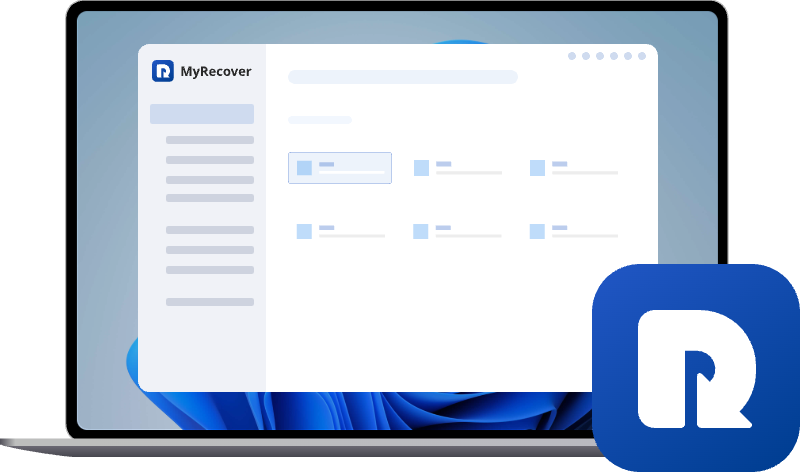How to Fix Windows 10 Update Error 0x80070643?
The 0x80070643 error in Windows Update usually appears during system updates, security patches, or .NET Framework installations. It can be triggered by corrupted update files, faulty system components, or antivirus interference. This guide explains how to fix Windows 10 update error 0x80070643 with practical solutions to help your update install successfully.
What is Error Code: 0x80070643?
Error 0x80070643 is a Windows installation and update failure code that commonly appears during Windows Update, Microsoft Office installation, or .NET Framework updates. It indicates that Windows encountered an issue that prevented it from completing the installation or update process.
Common Cause of 0x80070643Error during Windows 10 Update
The Windows Update error 0x80070643 usually appears when the update process is interrupted or when critical system components fail to respond properly. Below are the most common reasons why this error occurs during Windows 10 updates:
1. Corrupted Windows Update Components
Damaged or incomplete update files, broken update cache, or misconfigured update services can prevent Windows from installing new patches and trigger the Windows update or install error 0x80070643.
2. Damaged or Outdated .NET Framework
Many Windows updates rely on the .NET Framework. If it becomes corrupted, outdated, or incorrectly configured, updates—especially security patches—may fail to install.
3. Windows Installer (MSI) Service Issues
The Windows Installer service is responsible for installing many Microsoft updates. If the service is disabled, hung, or misconfigured, the update process may stop unexpectedly.
4. Antivirus or Security Software Interference
Aggressive antivirus programs can block update files, quarantine components, or interrupt installation processes, leading to update failure and error 0x80070643.
5. System File Corruption
Damaged system files—caused by sudden shutdowns, malware, or disk errors—can break the update mechanism and prevent important components from installing properly.
6. Incomplete or Failed Previous Updates
If a previous update did not install correctly, it might leave behind broken temporary files or dependencies that block future updates.
How to Fix Windows 10 Update Error 0x80070643 (Step-by-Step Methods)?
If you run into the 0x80070643 error while updating Windows 10 to Windows 11 since Windows 10 ended its extended support on October 14, 2025, try these solutions in order, starting with the simplest methods to minimize potential issues.
Method 1: Restart Your Computer and Retry the Update
Sometimes, temporary glitches prevent updates from installing properly. Save your work and restart your computer.
After rebooting, go to "Settings > Update & Security > Windows Update". Click "Check for updates"and try installing the update again.
Method 2: Restart Windows Update Services
The Windows Update service relies on several background services to function correctly. If these services have stalled or encountered an error, restarting them can resolve the issue.
Step 1. Press "Win + R" to open the Run dialog box. Type "services.msc" and press "Enter" to open the Services window.
Step 2. In the list of services, locate the following services, right-click on them and select "Stop".
Windows Update
Background Intelligent Transfer Service (BITS)
Cryptographic Services
Step 3. After all services are stopped, right-click on each one again and select Start. Begin with Background Intelligent Transfer Service (BITS), then Cryptographic Services, and finally Windows Update.
Close the Services window and try running Windows Update again to see whether the Windows update download error 0x80070643 is solved or not.
Method 3: Run Windows Update Troubleshooter
When encountering issues with Windows updates, a highly effective initial approach is to utilize the built-in Windows Update Troubleshooter. This automated diagnostic tool is specifically designed by Microsoft to identify and resolve common problems that may prevent the proper downloading, installation, or configuration of Windows updates.
Step 1. Press "Win + I"to open "Settings". Navigate to "Update & Security".
Step 2. Click "Troubleshoot" on the left pane and click on "Additional troubleshooters".
Step 3. Select "Windows Update" and click "Run the troubleshooter".
Follow the on-screen instructions and apply any suggested fixes.Retry the update.
Method 4: Repair or Reinstall the .NET Framework
Many critical Windows updates ( particularly those delivering security patches and feature improvements) require the .NET Framework to function properly. When this component becomes corrupted or suffers from version conflicts, it can directly cause installation failures with error 0x80070643.
In this case, we can use Microsoft's official .NET Framework Repair Tool, which automatically diagnoses and fixes common issues like damaged registry entries and service configuration problems.
Step 1. Press "Win + R", type "appwiz.cpl", and press Enter.https://www.myrecover.com/screenshots/en/windows/open-apps-and-features.png
Step 2. Click "Turn Windows features on or off" on the left panel.
Step 3. Locate ".NET Framework 3.5 and .NET Framework 4.x", uncheck them, and click "OK".
Restart your computer. Return to the same menu and re-enable the frameworks, then click "OK".
Method 5: Reset Windows Update Components
Corrupted update files or services can prevent updates from installing. Resetting them often resolves the error.
Step 1. Press "Win + S", type "cmd", right-click "Command Prompt", and select "Run as administrator".
Step 2. Enter the following commands one by one, pressing Enter after each:
net stop wuauserv
net stop cryptSvc
net stop bits
net stop msiserver
ren C:\Windows\SoftwareDistribution SoftwareDistribution.old
ren C:\Windows\System32\catroot2 Catroot2.old
net start wuauserv
net start cryptSvc
net start bits
net start msiserver
Close Command Prompt and restart your PC. Check Windows Update again.
Method 6: Perform DISM Scans and System File Check
Corrupted system files or a damaged Windows component store are among the most common reasons for update failures. Running DISM and SFC can help identify and repair these essential files. Always start with the DISM (Deployment Image Servicing and Management) scan first—it restores the integrity of the component store, ensuring SFC has a healthy source to repair system files accurately.
Part A: Run DISM Scan
DISM repairs the Windows system image. If this image is corrupt, SFC cannot function properly.
Open Command Prompt as Administrator;
First, run the following command and press "Enter":
DISM /Online /Cleanup-Image /CheckHealth
This quick check reports whether the system image has any corruption.
Next, run a deeper scan with the "ScanHealth"command:
DISM /Online /Cleanup-Image /ScanHealth
This process is more thorough and may take 5–10 minutes to complete.
Finally, repair any detected issues using the "RestoreHealth"command:
DISM /Online /Cleanup-Image /RestoreHealth
This step fixes corruption found during the previous scans and helps restore the Windows image to a healthy state.
This entire process can take up to 30 minutes or more and may appear to stall at 20%. Do not close the window while it is running. It is downloading replacement files from Windows Update to fix the corruption.
Part B: Run System File Check (SFC) Scan
Once the system image is healthy, use SFC to scan and repair protected system files on your running installation. In the same Administrator: Command Prompt window, type the following command and press Enter:
sfc /scannow
The scan will now run and display a progress percentage. This can also take 15-30 minutes. After the scan completes, you will see one of these results:
- "Windows Resource Protection did not find any integrity violations.": This means your system files are fine. Proceed to the next step.
- "Windows Resource Protection found corrupt files and successfully repaired them.": Restart your computer and try the update again.
- "Windows Resource Protection found corrupt files but was unable to fix some of them.": This indicates a more serious problem. You will need to check the CBS log file for details. In this case, restart your PC and run the sfc /scannow command one more time. If it fails again, you may need to use a more advanced repair installation.
Method 7: Disable Third-Party Antivirus Temporarily
Your antivirus software may mistakenly block update components. To resolve this, temporarily disable any third-party antivirus or firewall, attempt the update again, and ensure you re-enable the protection once the update is complete.
Method 8: Perform a Clean Boot and Update
A clean boot disables non-essential services and startup programs that may interfere with updatesand trigger 0x80070643 error in Windows update.
Step 1. Press "Win + R", type "msconfig", and press "Enter".
Step 2. Under the "Services" tab, check "Hide all Microsoft services", then click "Disable all".
Step 3. Go to the "Startup" tab and click "Open Task Manager". Disable all startup items.
Restart your computer.Try running the update again. After the update, revert to normal startup.
Method 9: Manually Download and Install the Update
If Windows Update keeps failing with error code 0x80070643, you can bypass the built-in updater and install the update manually. This ensures you get the correct update package directly from Microsoft.
Step 1: Go to "Settings > Update & Security > Windows Update".Check the update history to find the KB number (e.g., KB5068781) of the update that failed.
Step 2: Open your browser and go to the Microsoft Update Catalog website.In the search bar, type the KB number and press "Enter".
Step 3: Look for the version that matches your system:x64 for 64-bit systems; x86 for 32-bit systems. Click "Download"next to the correct entry.A pop-up window will appear—click the link again to start the download.
Step 4: Once downloaded, locate the .msu or .cab file in your Downloads folder.Double-click the file to run it.Follow the on-screen instructions to complete the installation.
Some updates require a reboot to apply changes. If prompted, restart your computer.Go back to Windows Update and check that the update no longer appears as failed.
Lost Data During Windows Update Error 0x80070643? Recover Them Easily
If the 0x80070643 error caused your system to crash, freeze, or reboot unexpectedly, you may find that some critical fileshavedisappeared. Don’t panic—lost data after a failed Windows update is common, and in most cases, it can still be recovered.
To restore your missing files quickly and safely, a professional data recovery tool is highly recommended. MyRecover stands out as a reliable solution totackle such complex data loss scenarios specifically. It can scan your drive deeply, locate deleted or lost files, and recover them with a high success rate, even if the update process damaged the file system or made the drive inaccessible.

- 🌟No Backup Needed: Recovers files directly from your drives.
- 🌟3-Step Process: Simply Scan, Preview, and Recover
- 🌟Work with 500+ devices: HDD, SSD, USB drives, and memory cards.
- 🌟Cover 500+ Data Loss Cases: Deletion, format, system crash, virus attack, etc.
- 🌟Support 1000+ File Formats: Texts, pictures, videos, audios, emails, compressed files, etc.
- 🌟Preview Functionality: Preview recoverable files and ensure accurate recovery.
- 🌟AI File Recognition & Scan: automatic AI technologies and algorithms.
Let’s take a closer look at how it helps you get your files back.
Step 1. Install and open the software. Choose the drive where your files were lost—for example, the system drive (usually C:) and click "Scan" to start the scanning process.
Step 2. Once the scan completes, browse through the results and use the filter options (file type, size, keywords) to quickly find the files you want. Choose your important files or folders, then click "Recover".
Step 3. Select the destination location, Make sure to save the recovered files to another drive to avoid overwriting the lost data.
To Conclude
If Windows Update error 0x80070643 interrupts important updates or leads to unexpected data loss, with the abovetroubleshooting steps, you can often resolve the issue without much difficulty.If the error caused missing or corrupted files, MyRecover provides a fast, reliable way to retrieve your data and minimize downtime.
Its deep-scan engine, intuitive workflow, and high recovery success rate make it an ideal solution for recovering files after update failures, restoring data from a crashed system, and handling many other common data-loss scenarios.


